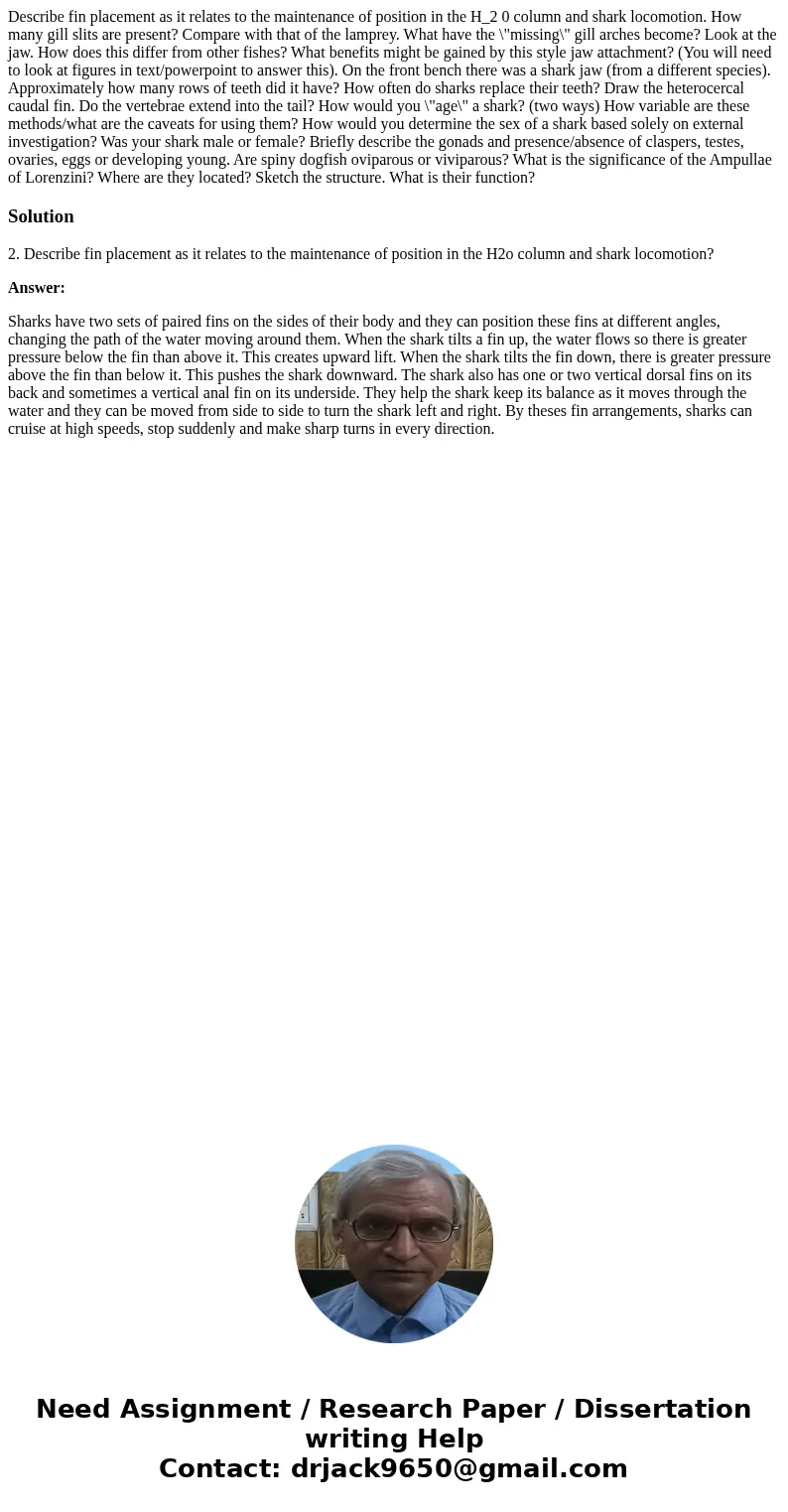Describe fin placement as it relates to the maintenance of position in the H_2 0 column and shark locomotion. How many gill slits are present? Compare with that of the lamprey. What have the \"missing\" gill arches become? Look at the jaw. How does this differ from other fishes? What benefits might be gained by this style jaw attachment? (You will need to look at figures in text/powerpoint to answer this). On the front bench there was a shark jaw (from a different species). Approximately how many rows of teeth did it have? How often do sharks replace their teeth? Draw the heterocercal caudal fin. Do the vertebrae extend into the tail? How would you \"age\" a shark? (two ways) How variable are these methods/what are the caveats for using them? How would you determine the sex of a shark based solely on external investigation? Was your shark male or female? Briefly describe the gonads and presence/absence of claspers, testes, ovaries, eggs or developing young. Are spiny dogfish oviparous or viviparous? What is the significance of the Ampullae of Lorenzini? Where are they located? Sketch the structure. What is their function?
2. Describe fin placement as it relates to the maintenance of position in the H2o column and shark locomotion?
Answer:
Sharks have two sets of paired fins on the sides of their body and they can position these fins at different angles, changing the path of the water moving around them. When the shark tilts a fin up, the water flows so there is greater pressure below the fin than above it. This creates upward lift. When the shark tilts the fin down, there is greater pressure above the fin than below it. This pushes the shark downward. The shark also has one or two vertical dorsal fins on its back and sometimes a vertical anal fin on its underside. They help the shark keep its balance as it moves through the water and they can be moved from side to side to turn the shark left and right. By theses fin arrangements, sharks can cruise at high speeds, stop suddenly and make sharp turns in every direction.

 Homework Sourse
Homework Sourse